| Reviews & Columns |
|
Reviews DVD TV on DVD Blu-ray 4K UHD International DVDs In Theaters Reviews by Studio Video Games Features Collector Series DVDs Easter Egg Database Interviews DVD Talk Radio Feature Articles Columns Anime Talk DVD Savant Horror DVDs The M.O.D. Squad Art House HD Talk Silent DVD
|
DVD Talk Forum |
|
|
| Resources |
|
DVD Price Search Customer Service #'s RCE Info Links |
|
Columns
|
|
|
Oslo, August 31st
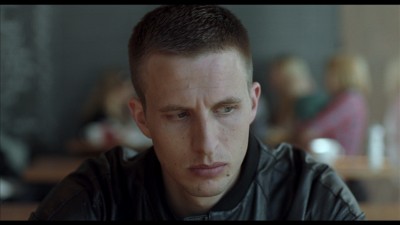
The Norwegian director Joachim Trier (whose last film was 2006's widely admired Reprise) opens his latest, Oslo, August 31st, with a montage of voice-overs accompanying briskly edited images of the Norwegian capital, with the multitude of voices describing seemingly random scraps of Oslo-related recollections from many different lives and times while the multi-format visuals (from 8 mm to videotape to news footage to movie clips), taken from many sources over many decades, become a highly charged memory-constellation composed of disparate parts of the city over the years. This teeming, attention-grabbing opening, divided from the film "proper" by a card that comes up to announce the title, is rather unlike anything else Trier shows us from that point on, but it very aptly sets the tone for his project: This is a city that has played and continues to play a part in many, many people's lives, pasts, memories, formations, aspirations, and dreams, and following virtually any one of the tantalizing stories alluded to in this sequence would be tempting. So, although Trier and cowriter Eskil Vogt (freely adapting and updating the same 1931 novel, Pierre Drieu La Rochelle's Le Feu follet, upon which Louis Malle based his 1963 film of the same name) are going to take up and hone in on just one from among all these equally valid stories, it's our assured awareness of an open-hearted, sincerely curious, sympathetic, and attentive attitude on the part of the filmmakers, announced in this inventive way at the very beginning, that sets up what turns out to be the narrowly focused study of one solitary character as something full of the potential to be egalitarian, expansive, even uplifting, despite this particular person's path surely being among the more tortuous of all those that have started from, intersected with, or led back to Oslo.

And so, after the title card flashes, we find ourselves following along in the life of Anders (Anders Danielsen Lie), a man in his mid-30s who, after living for many weeks at a halfway house for recovering addicts somewhere in the Norwegian countryside, is about to head back to the city for a day. The practical aim/justification of his release is to interview for a job at a hip cultural magazine (Anders's first attempt in years to revisit what we learn was a promising career as a writer that he threw away for full-time devotion to booze, heroin, and other intoxicants). But for Anders, as much as for all those voices whose story-snippets we heard in the opening sequence, Oslo -- his hometown -- is a repository (and, in his case, a minefield) of all the memories, reminders, rebukes, and temptations of his past. Upon arrival, Anders first pays a visit to an old friend, Thomas (Hans Olav Brenner), a former drug buddy who took the path Anders didn't and became a successful academician and family man. Initial cordiality, embarrassment, and nervousness at their reunion give way to the old familiarity, and Anders and Thomas are soon taking stock of themselves and each other in the affectionate but bluntly honest way of longtime friends: Thomas wants to reassure Anders that it's not too late for him to pick back up where he left off and find fulfillment in the straight world, but his own sardonic, ambivalent confessions about the discontents, burdens, and disappointments of his "successful" life make his well-intentioned encouragements seem dubious, above and beyond Anders's deep-seated doubts and insecurities about what, if anything, his life can possibly be after he crashed it on his ruinous chemical detour, leaving himself so scarred and so many of his bridges damaged or burned.
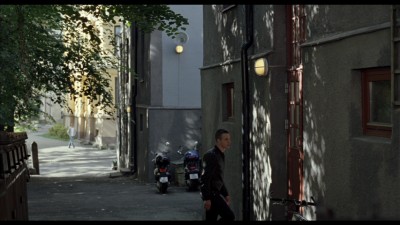
Thomas and Anders's conversation, their catching up and exchanging of thoughts, reminiscences, doubts, and fears, finds them wandering the parks and streets of Thomas's gentrified-bohemian neighborhood in a sequence that constitutes a full third of the film's running time -- its best, richest, most relaxed segment. What follows is the rest of Anders's day, related through more abbreviated (though usually no less powerful, revelatory, and well-played) scenes: There's the job interview, where Anders must account, to the magazine's friendly, cosmopolitan middle-aged editor, for the missing years in his CV (the confession of why those years show nothing is only the most heart-wrenching example of the film's unfailingly clear understanding of the unavoidable shame and awkwardness Anders will always be prey to for being an addict). There are the increasingly desperate voicemails he leaves for an ex-girlfriend, and the awful meeting with his sister's partner, sent in her place to give him the keys to the family home because his sibling doesn't know if she can handle the emotional rollercoaster Anders represents for her after all his treacherous behavior when he was using. (To add insult to injury, this sister-in-law figure has also been mandated to escort the now forever suspect Anders to the house to keep an eye on him around the silver and the heirlooms.) Through these interactions and conversations, a more and more filled-out and nuanced profile of Anders begins to fall into place: what he's done, his mixture of true regret and petulant resentment, how he might be received by a world that, while far from unkind, doesn't know what to make of him now and can't ever forget the havoc his addiction has wrought. All of these scenes are marvels of naturalistic acting; none of the exposition seems forced, the spaces between the dialogue and the actors' body language and expressions leave room into which emotional insight and implied history can flow, and the visual tone created by Trier and cinematographer Jakob Ihre -- alternating between beautifully lit, shallow-focus, intimate handheld shots and equally well-composed but more controlled, wider shots that place Anders and his companions in the context of the city and all its other lives -- is at once captivating and becalming. The filmmaker's confidence in the suspense inherent in every scene (can Anders's recovery really mean a second chance? Will the inescapable, fraught reminders of and confrontations with a regrettable past now that he's back in the real world lead straight to his backsliding?) creates a leisureliness of pace that allows for unpredictable, unexpectedly evocative and moving moments, as when Anders, sitting in a café, overhears a young woman breathlessly reading off an extravagant, impossible list of all the things she wants to do with her life, making him smile to himself in response, half happily and half ruefully.
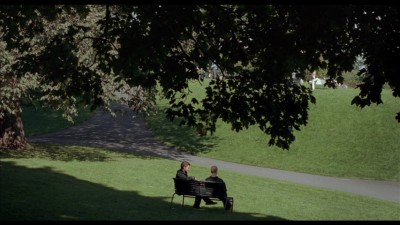
Something goes temporarily wrong in the film's final third, which takes place through the dusk and beyond nightfall, when Anders reconnects with some of his more reckless and troubling old acquaintances and begins to gravitate way too close to what can only be a danger zone in his fragilely recovering state. Too much of this plays out like the kind of standard-issue moody travelogue on the seedy/glamorous nightclub underworld of drugs, sex, and relentlessly chic techno music we've seen in many, many a film; in this context, it seems not just tiresomely conventional but jarringly incongruous. One of this picture's strongest suits is that it generally avoids creating manipulative auras that sentimentalize, romanticize, or judge Anders or his situation, so it's all the more a drag to see these sequences of exteriorized, commercial-grade "coolness" take over from the otherwise much subtler and more interesting approach. It regains its footing when dawn arrives and Anders leaves his companions frolicking, La Dolce Vita-like, in a swimming pool that's to be closed the next day (we're now in the August 31 of the title, the last day of swimming weather) to finally head back to the house he grew up in and the guilt it represents now that his parents are having to sell it off (rehab is expensive). His walk back through the morning-lit streets is accompanied by a voiceover cascade of thoughts about his parents -- an impressionistic, free-associating meditation with which he seems to be looking for, and failing to find, what was to blame, the elusive moment when things went wrong in his progressive, well-off, stimulating and encouraging upbringing. In the soon to be liquidated, half-packed home, with the morning sun glancing through the windows, Anders plays a sonata on the family piano (forming a tribute to the similar, famous Jack Nicholson moment in Five Easy Pieces, a movie which, with its story of a bittersweet homecoming and mood of free-floating melancholy, could certainly be considered a forebear of Oslo, August 31st) before taking the decisive, concluding action that will reveal whether or not he'll try to reintegrate himself, scars and burdens and all, into this world or abandon it forever. We cut away for the film to close, devastatingly, on a measured succession of still, understatedly and exquisitely composed shots that takes us back through all the most resonant spaces and places, now empty, that Anders has marked with his presence over the 24 hours or so we've spent with him; it's the kind of cinematic moment for which the descriptor "lyrical" was tailor made, and one that comes close to compensating for the film's temporary stumbling.
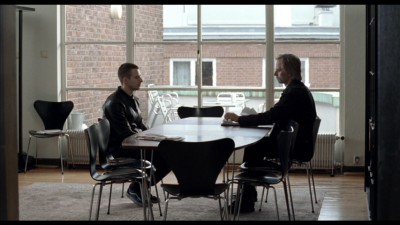
Oslo, August 31st is an imperfect work -- one that broaches excellence but fails to reach and sustain the heights attained by its brethren in captivating, visually indulgent conversational cinema (Weekend, Before Sunrise, etc.) -- whose noticeable shortcomings still can't undermine the many things in it that Trier and Co. do bring off: the complex, multidimensional Anders, the ingenuity and economy with which he's been conceived and written, the brilliant focus and commitment with which he's been played, and the craft with which his relationship to the others in his life, and to the city around which all their lives are playing out, are conveyed with such a fine-tuned visual, dramatic, and temporal sensibility. At its best, the film, with its generous and adroit way of telling its story, makes good on the promise implicit in its striking, big-picture beginning: By examining this one badly flawed, not very extraordinary (even his vices and the course they run, however harrowing, are typical in their way) but nevertheless intriguing person, carefully and with tightrope-walking emotional poise, it leaves us with the validating sense that human lives in general are worth examining, that any life story can be worth telling and can be told with an honesty and attentiveness that reveal even its contradictions and errors with dignity and grace.
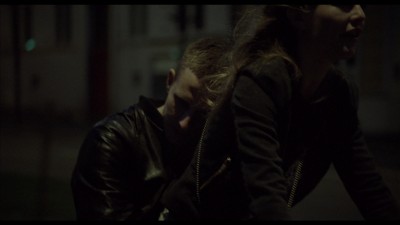
THE DVD:
This transfer of Oslo, August 31st presents the film in anamorphic widescreen at the theatrical aspect ratio of 1.85:1 and does a very nice job of preserving the film's diverse textures at the beginning and delicate, nuanced focus shifts and plays of light, shadow, and color. Everything looks solid, with only the barest trace of edge enhancement here or there and no aliasing problems. On the digital noise reduction front, the general smoothness and un(der)variegated quality of the image makes it appear that the DNR has been applied somewhat too heavily, though not to an unforgivable degree (some visible celluloid texture remains). All the colors are solid and skin tones look natural, at any rate, and there are certainly no other serious problems to adversely impact the often stunning visuals Trier and Ihre have created.
Sound:The Dolby Digital 5.1 surround soundtrack (in Norwegian with non-optional English subs) is very good, with all sounds clear and resonant (and fully immersive as appropriate, particularly in scenes with diegetic music, though there is virtually no score). No distortion or imbalance is present, and the sound is sharp, dynamic, and perfectly apportioned among the different audio channels at all times.
Extras:Not much; just the film's theatrical trailer and previews for four other Strand Releasing titles.
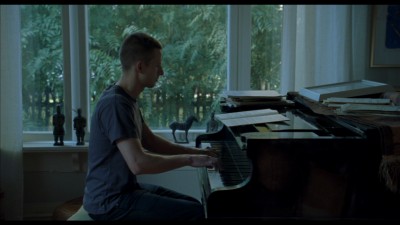
For the most part a very successful, visually gorgeous, gentle, and complex character study, Oslo, August 31 only goes slightly off the rails when it veers away from where its pulse really lies into scenes that feel extraneous; it has some fairly boilerplate stuff that stands out as too recognizably, desultorily chic and typical for a film dealing with its subject matter of drug addiction among alienated urbanites. Those blander stretches aside, however, the alienated urbanite himself (played without a trace of self-indulgence by the excellent Anders Danielsen Lie) is brought to life for us in a way that's rich, daring, and sophisticated in its specificity and focus. Anders is a troubled, very at-risk thirtysomething whose individual emotional, psychological, social, and personal-historical contours we infer gradually; the film lets us get to know him through his unpredictable actions and interactions as he navigates the Oslo where he grew up (and where he became a drug-addicted wastrel despite coming from what even he seems to admit was a healthier and happier than average home) while on temporary release from the rural rehab center where he's been ensconced. For a film that has such natural, patient pacing and whose plot has a duration of only around 24 hours, it's impressive how fully Trier and co-screenwriter Eskil Vogt flesh out so much about this lost, vulnerable young man -- everything relevant that's led up to this galvanizing, memory-tortured day. Their loose, patient storytelling approach also allows the city to become a charged backdrop full of evocations, an emotional prism and a part of every characters' identity (a feel reinforced to great effect by cinematographer Jakob Ihre's very sensitive, sensuous way with lenses and lighting), while at the same time letting payloads of roiling, unspoken emotion and history emerge from the gaps and subtexts in the conversations between Anders and the family and friends he can tell, painfully, can't quite trust him and don't quite believe he has changed (painfully because, like any addict, he can't be entirely sure himself, ever, that he's left his bad behavior behind him -- an uncertainty splendidly conveyed by Lie using little but his face and eyes). For the most part, they pull it off with aplomb, making for a quietly compelling, engaging look at and into a character who, the filmmakers convince us, is more worthy of our interest than we might suppose; who is given a refreshing, revealing amount of room to live and breathe as this slice of his life plays out before us; and whom the film invites us neither to romanticize nor to judge (nor, perhaps, even to completely understand), but simply to know and care about. Recommended.
|
| Popular Reviews |
| Sponsored Links |
|
|
| Sponsored Links |
|
|
| Release List | Reviews | Shop | Newsletter | Forum | DVD Giveaways | Blu-Ray | Advertise |
|
Copyright 2024 DVDTalk.com All Rights Reserved. Legal Info, Privacy Policy, Terms of Use,
Manage Preferences,
Your Privacy Choices | |||||||













